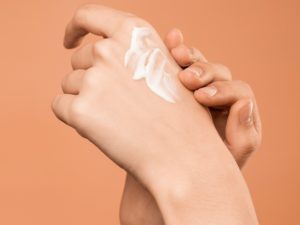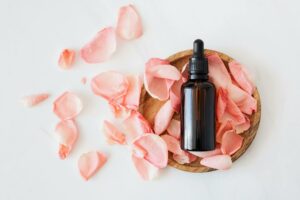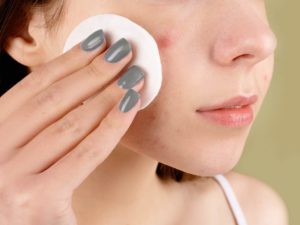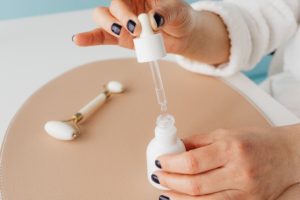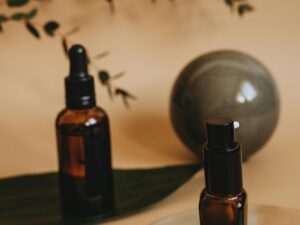Ingredients in Skincare to Watch out for – What is Safe and What to Avoid!
Skincare is essential to improving your overall health, inside and out. Your skin protects your body and should be protected in return!
This is why everyone needs a skincare routine, even a simple cleanse and moisturize.

Sunblock is more popular than ever, and everyone’s dropping their routine for others to follow.
With all this awareness, some ingredients either get a bad reputation unnecessarily or are ones you REALLY should avoid.
Keep reading to learn facts from fiction on this list of Skincare Ingredients to note.
What Ingredients Should We Watch Out For?
Here are nine ingredients that we should be looking out for! Find out what’s dangerous, what’s safe, and what’s on the fence.
Paraffins
Paraffin has been in the spotlight in recent years. It is very widespread in moisturizers as it is very smooth and slippery, allowing them to be spread on the skin easily.
But paraffin is not actually good for the skin.
This is a product that is nothing more than a series of combined hydrocarbons that are derived from oil and are very economical for the industry, so it’s very cheap to use in products. But this also means it can be contaminated in the process of refining it.
When we apply a cream with this ingredient, a layer is created on our skin that gives us a soft sensation, but this smoothness is a hazard.
This layer removes the skin’s ability to perspire, trapping toxins inside. In other words, it clogs the pores and our body cannot eliminate other substances.
Parabens
Parabens have been the source of much misinformation. They are a type of preservative used in skincare and cosmetics.
In amounts used in products, parabens should be safe, as they do not penetrate deeply into the skin. They preserve products and allow for safe use, keeping bacteria out.
The problem is that in high concentrations, studies have found a deep skin penetration, with 90% of samples containing this substance. Again this is in high doses, so it should be safe in low doses, right?
Well, some researchers link parabens to higher occurrences of some cancers. Parabens have also been seen to cause hormonal alterations.
Studies have also found this ingredient in urine samples of US adults, regardless of demographic, meaning it does in fact get deep into the skin and into the body.
The jury is still debating this one, but for me, when in doubt, do without!
Formaldehydes
Formaldehyde is another ingredient used to preserve and extend the shelf life of products.
But, isn’t this also used in embalming? Ew?
Here are the facts.
Formaldehyde is classified as a carcinogen, meaning it is a cancer-causing agent yet it’s still used in products to this day.
Formaldehydes are volatile compounds present in cleaning products, cosmetics such as nail polish, deodorants, gels, shampoos, toothpaste, and makeup.
It’s disguised by other names such as DMDM hydantoin, methylene glycol, quaternium 15, and 3 dioxanes.
You probably won’t be inhaling enough of this to pose a risk of cancer, it can in fact irritate the skin, causing redness, itching, and flaking.
Phthalates
Phthalates are primarily used in solvents and fabric softeners.
Phthalates were used to replace formaldehyde in products such as nail polish.
They are in fact a substance that should be avoided and there is a lot of scientific evidence of their relationship with cancer and the disruption of the hormonal system.
In addition, it can cause reproductive problems, DNA damage, and fetal malformations.
Polyethylene Glycols (PEG)
Polyethylene glycols, also known as PEG, are substances that are used as emulsifiers.
They are a type of cosmetic ingredient that is used to thicken and stabilize.
Some say it is harmful to the skin because of potential contamination with 1,4 dioxane, a known carcinogen.
PEG in cosmetics is formulated to reduce or remove contaminants, but the information should be known. Current research indicates that while PEG-20 glyceryl triisostearate and PEGylated oils are safe, more research is needed on PEG/PPG-17/6 copolymer.
Ethanolamines
Ethanolamines are substances found in soapy products.
They are widely used so that cosmetic products can have a creamy or fluffy texture, the compounds known as DEA, MEA, and TEA.
This substance penetrates further into the skin and had been found to disrupt hormones in the body, and should be avoided!
For example, nitrosodiethanolamine is a known carcinogen, and other forms like DEA affect reproductive health greatly.
Heavy Metals
Many heavy metals such as aluminum or even lead are used in the cosmetic industry.
These are ingredients that are harmful to our skin causing irritation, redness, and clogging of pores but are widely used in products such as deodorants or lipsticks.
Heavy metals are substances that may disrupt the hormonal system.
They are also highly fat-soluble, meaning that these ingredients can remain inside the fat of our body without being able to eliminate them.
Ammonia
Ammonia ingredients such as ammonium hydroxides are mainly used for hair products, such as dyes or hair perms. This increases the permeability of the product into the hair and scalp.
In high concentrations, it is a substance that can cause problems if inhaled. Throat irritation, lung inflammation, and damage to the respiratory tract or eye irritation are some symptoms.
Ensure your products have 6% or lower of this substance and you’re good to go!
Sodium Lauryl Sulfate
Sodium Lauryl Sulfates (SLS) aren’t deadly, they are sulfate-based detergents used as a cleansing agent.
These tend to be overly stripping, as they remove all-natural oils of the skin and scale leading to irritation, inflammation, and redness. this can trigger eczema, dermatitis, and other skin conditions.
Not all SLSs are created equally. Sodium Laureth Sulfates are derived from coconuts and tend to be gentler on the skin.
Sodium Sulfonates are even gentler and are not considered SLSs.
The Takeaway
It’s important to know what is going into your products and the potential damage that may cause.
Everyone should be able to easily weigh the pros and cons of ingredients.
For example, I still use PEG in products but tend to avoid aluminum deodorants.
Learning about the skin, the importance of a skin routine, and how certain ingredients may contribute to problems is an important step to raising overall health and wellbeing.
The skin absorbs everything so consciously look at products that can help you, not harm you.
